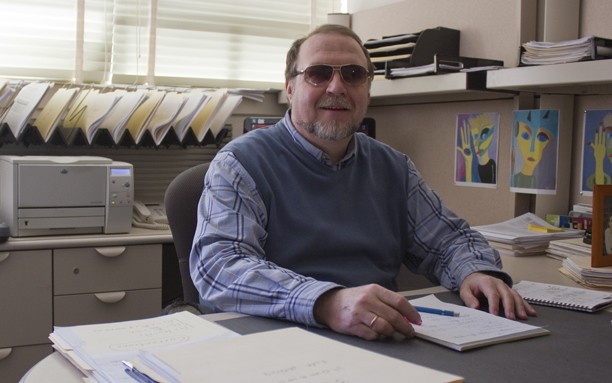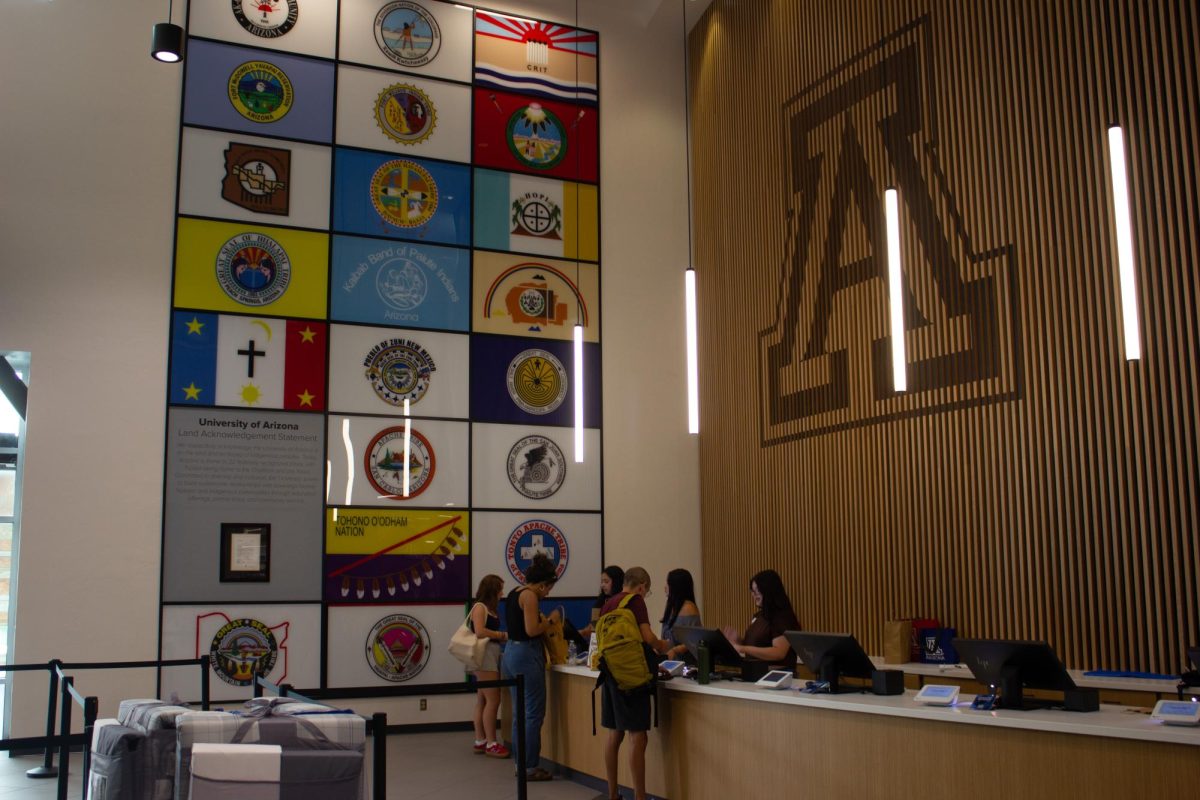A UA professor is challenging Albert Einstein’s theory of general relativity and questioning whether it holds up in all areas of space.
Andrei Lebed, a physics professor at the UA, has proposed an idea for an experiment that could be a “breakthrough,” according to university professors.
The two most successful theories of physics developed in the 20th century are general relativity and quantum mechanics, according to Michael Hart, associate astronomer at the UA. Quantum mechanics describes three of the four known fundamental forces in the universe – electromagnetism and strong and weak nuclear forces.
The fourth force, gravitation, can be described by general relativity.
Attempts to merge general relativity and quantum mechanics have failed in the last century. Physicists know that both theories work separately but have been unsuccessful in creating a single theoretical framework that describes them both.
“This has been the black sheep of the physics world for a hundred years,” Hart said. “If physics is to be successful, we have to find a way of unifying those two theories.”
One of the major cornerstones of general relativity is the idea that inertial mass and gravitational mass are the same, Hart said.
Inertial mass is the sensation one feels when being slammed against a seatbelt in a car crash. Gravitational mass is the gravitational pull between a body and the Earth, or one’s
“weight.” When measured, these two masses are the same.
“There is no fundamental reason why these masses have to be the same; it just seems that they are,” Hart said. “If there were experimental evidence they are not the same, it would essentially mean changes would need to be made to general relativity.”
To date, there has never been an experiment done that proves general relativity to be wrong — but Lebed is working to change this. His idea is to send a spacecraft full of hydrogen atoms into flat space and measure their electrons to see if they jump to different energy levels. According to Einstein’s theory, mass warps space. Even over the width of a single atom, there might be curvature that affects how the atom behaves.
In quantum mechanics, electrons have a ground state, which is their lowest energy state, and an excited state, meaning any energy level higher than its ground state. When an electron jumps back from an excited level to ground level, it emits a photon, or light, Lebed said.
Einstein’s theory says that when energy increases, so does mass, leading to the equation E=mc2. But depending on whether the atom is in flat or curved space, its mass might be different, and the equation might not hold up.
The probability that Einstein’s equation is broken is “tremendously low,” according to Lebed. However, because there are so many atoms in one kilogram of hydrogen Einstein’s theory might not hold true for many billions of the atoms, Lebed said in an email.
“The number of photons is microscopic in real life…it is billion, several many billions,” Lebed said. “The emission of the photon is the consequence of marriage between these two theories.”
The laws of the atom are different from what Einstein predicts, UA astronomer Don McCarthy said. Einstein’s theory does well in explaining the universe as a whole, but it doesn’t do well at the smallest scale of an atom, he said.
If the experiment was successful, it would prove that inertial mass and gravitational mass are not the same, and that in some areas of space, E does not equal mc^2.
“It would be a revolutionary breakthrough for physics,” Hart said. “General relativity and quantum mechanics have never been proven wrong.”
The challenge now is getting other physicists on board with the experiment, according to Lebed. He has done the calculations, but many physicists have already deemed the project impossible simply because no one has done it before.
“This step to unite gravitation and quantum mechanics is the most difficult. People cannot do it,” Lebed said. “This is just one small move in the right direction.”
Others agree that this type of experiment could have a major impact.
“This won’t make a difference in a person’s normal life, but it might to the technologies we develop and use, such as TVs, global positioning systems and spacecraft,” McCarthy said. “And to the physicist, it provides a more elegant and accurate explanation of the entire universe.”









